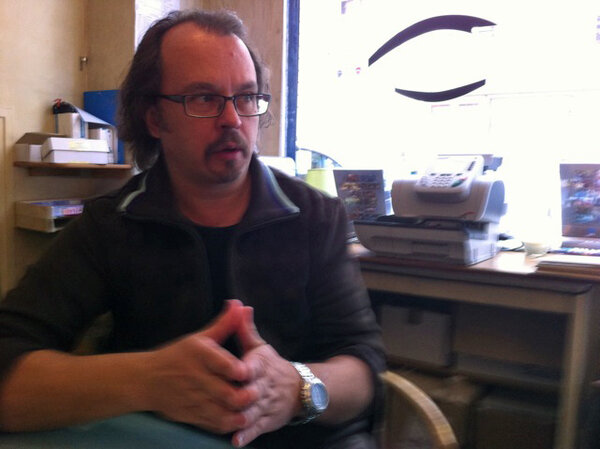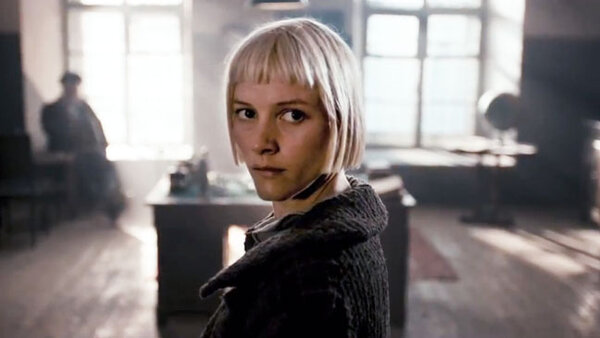Conversation with Finnish DoP Rauno Ronkainen, President of the FSC
Rauno Ronkainen is the President of the Finnish Society of Cinematographers. His career in the cinema began in 1987, first as a focus-puller, gaffer or camera operator. Beginning in the 2000s, Ronkainen became a full-fledged director of photography and in 2012 signed off on three new films, including) Purge, (an adaptation of Sofi Oksanen’s international bestseller (released in Finland in September). He also teaches at the University of Helsinki in the Department of Film and Scenography.

Can you describe your working relationship with directors ? Do you do a lot of preliminary preparation with them ?
Rauno Ronkainen : Research and preparation for each project is an extremely important aspect of each project for me. I try to spend as much time as possible with the director in order to understand what he has in his head, his point of view, and the essence of his film. In parallel, I begin to set up each scene and then I compare with the direction the project is taking as a whole and with the results of scouting. To tell the truth, I feel a bit as though I were reinventing the bicycle with each new project, because I come up with a new set up, a new method that is a unique prototype tailored as closely as possible to each specific film.
For example, on my last film, Purge, Director Antti Jokinen had filmed a lot of clips in the United States. He knows a lot about shooting and lighting and had very precise technical requests. He really prepares the set for each day of filming with a list of wishes or references. It’s his way of telling his story in a very precise manner, which forces me to integrate his requests directly into my work with my team. But that’s alright for me ! The important thing is that the director feels at ease and has complete freedom to create according to his method.

What is your working style with your team ?
RR : I leave my teammates a lot of freedom in their work. I prefer to describe the ambience and what I want to get rather than giving them a precise list of tools or techniques to use. That means that the team leaders draw up lists of equipment, and we go over them as a whole and as a group at the end of scouting. Creating a feeling of freedom and creativity is very important to me when working as a team. On set, my work is entirely based on rapid and silent communication with my gaffer, who is constantly hooked up to me via an in-ear microphone and who can make adjustments to the lighting at any given moment.
What are your sources of inspiration ?
RR : My inspiration comes mostly from other films. I don’t claim to imitate a given ambience, but discussing particular scenes or sets that I have found in various movies helps me a lot. To me, films from the 1970s or the work of cameramen like Haskell Wexler and Vilmos Szigmong are a wonderful starting point to discuss the fabrication of image. I admit that I admire cameramen who can literally create a unique style from film to film, but that’s not my case. I adapt and I slowly adapt each film in function of influences, constraints, and the director’s wishes in terms of scenography.
During the conference held at the Finnish Institute, you discussed the importance of using mobile light sources…is this a method you now often use ?
RR : I like moving lights more and more, because I believe that they can flesh out certain scenes. That is partially a result of my own observation of light, especially in my hometown of Helsinki, where I live in an old building with lots of old windows. Just the spectacle of the setting sun and the light shining through the windows and then travelling over the walls of the room is extremely dynamic ! Of course, I’m not claiming that lighting each scene of a film with lights installed on cranes is a panacea, but it can help give a certain almost unconscious rhythm as long as you do it with lots of care and precision.
Do you ever shoot in a studio ?
RR : In Finland, we usually shoot on location. Nonetheless, there are a few studios where you can build sets, but the cost is prohibitive in most cases. As is the case anywhere, we are forced to film in empty warehouses reconverted into studios, but the acoustic and light equipment aren’t at all up to par. Amongst the films that I showed at the Finnish Institute, only one (Twisted Roots, by Saara Saarela, 2009) was mostly shot in Helsinki’s largest studio. This is the exception that proves the rule and was justified by the unreal atmospheres based on winter light that greatly played on reflections.
Is it easy to get what you need in terms of equipment ?
RR : Equipment is available without any problem from both the “historical” outfits that have been renting cinema equipment for a long time and the more recent ones that are specialized in digital cinema. Especially since our neighbours, Sweden and Denmark, have an important film industry, we can find whatever we like. Another important detail is that our image technicians are very experienced. Everyone, from the focus pullers to the gaffers to the key grips, often works abroad with international teams, such as my gaffer, Jani Lehtinen, who recently worked on David Fincher’s Millennium (partially filmed in Sweden).
Do you still have silver-process studios in Finland ?
RR : No, that time is over ; the last lab closed its doors in August 2012. To develop film, we now have to go to Sweden or Denmark…but how long will that last ? Of course, we have a few postproduction labs that are still able to transfer film developed in HD or scan it, but it’s becoming rare to be asked to film using silver-process film. Persuading producers to keep filming using silver process is impossible…except if filming conditions are such that only film cameras can carry it off without too much risk !
For my last film, Purge, there was only one 35mm copy for 100 digital copies distributed in Finland. This copy (made in Denmark) was more or less subsidized by public funds so that the film could be shown in the last few cinemas that don’t have digital projectors, a shift that occurred very rapidly with the help of public funds.
Do you regret this situation ?
RR : What makes me sad is that I feel that a tool was taken away from us and that it will never come back, despite the decades of accumulated know-how and experience…and unfortunately this is the case everywhere in the world…but that’s just the way it is.
(Interview conduced in October 2012 by François Reumont and Michel Abramowicz, redacted par François Reumont for the AFC, and translated from French by Alex Raiffe)
 En
En Fr
Fr




